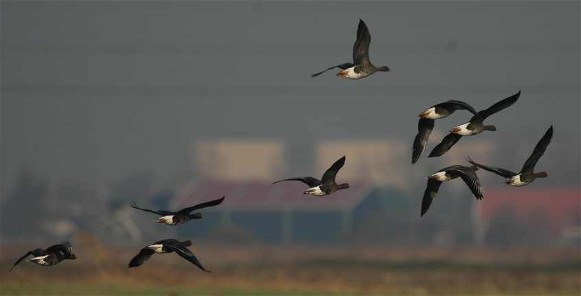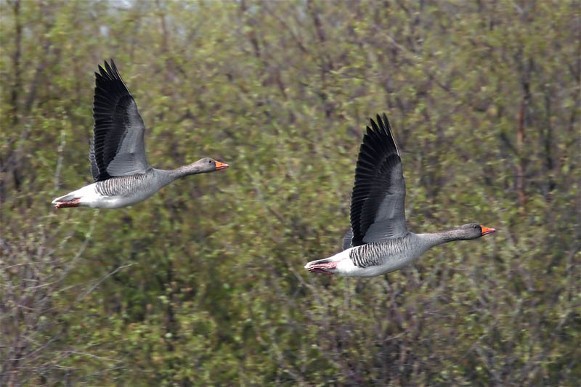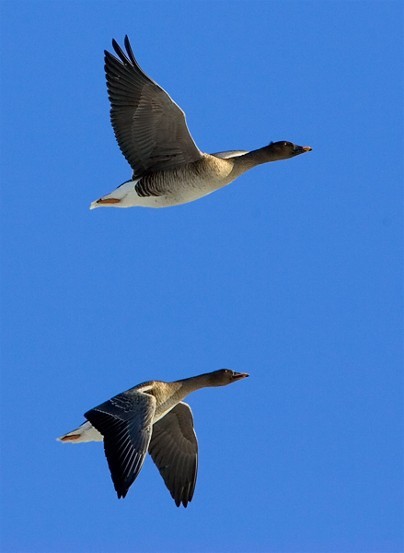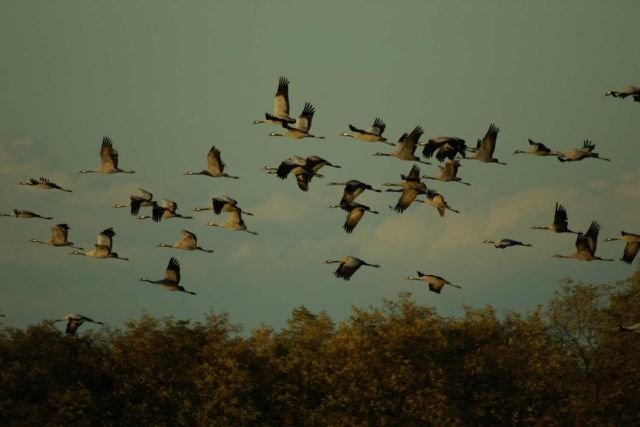Migratory birds
Migratory birds (перелітні птахи; perelitni ptakhy). Migration is a part of the life cycle of some birds. It is an annual phenomenon involving whole populations of birds in long-range displacements from their breeding grounds to wintering sites and back. Migration depends on a complex internal rhythm affecting the whole organism, particularly the endocrine glands. The geographical position of Ukraine and its climatic variations (see Climate) support several patterns of migratory behavior among the more than 150 species of migrating birds found there: seasonal translocation, overflights, mixed sedentary/migratory movements, and vertical movements. Most birds fly south or southwest for the winter, but some prefer eastern directions (finch, willow warbler). Massive seasonal translocation is typical for swallows, storks, geese, cranes, glareolas, sandpipers, nightingales, and others birds. The birds arrive in April or May and depart in September or October. Hawks, owls, wild ducks, Palla's sangrouse, Bohemian waxwings, and willow ptarmigans arrive from the northern regions to winter in Ukraine. Stifftails (Ukrainian: savky), swans, some golden-eye ducks, and eiders can be seen only in overflights to other areas. Redstarts and rock ptarmigans move from higher mountain elevations to warmer valleys. Pointed snipes, stone curlews, water rails, and plovers migrate south from moderate and cold climates but are sedentary in warmer southern Ukraine. Many water birds remain in their breeding areas as long as the lakes and rivers stay ice-free.
Ihor Masnyk
[This article originally appeared in the Encyclopedia of Ukraine, vol. 4 (1993).]




